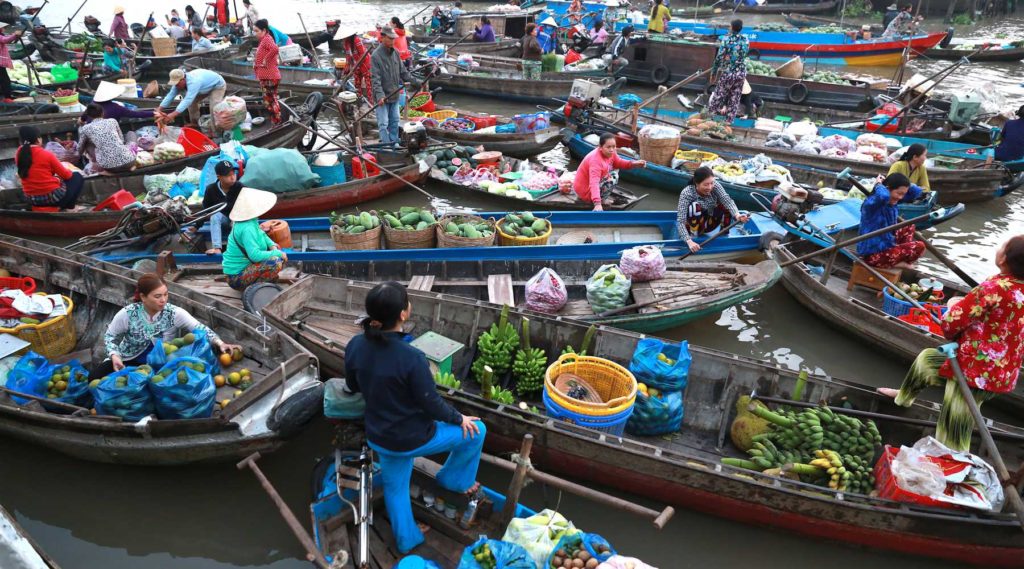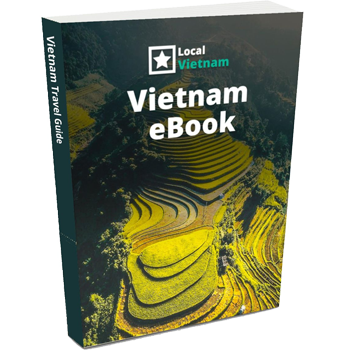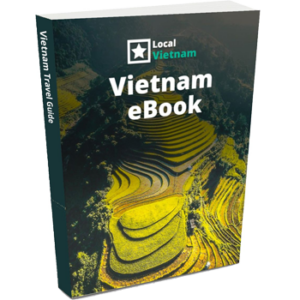What is Phong Dien Floating Market?
Phong Dien Floating Market is a small riverside market about 17 kilometers from Can Tho, the city best known for the much larger Cai Rang Floating Market. Unlike Cai Rang, which developed as a wholesale hub, Phong Dien served as a community market where locals sold everyday goods in smaller quantities. At dawn, boats would gather to trade fruit, vegetables, and simple meals, turning the river into a lively meeting place.
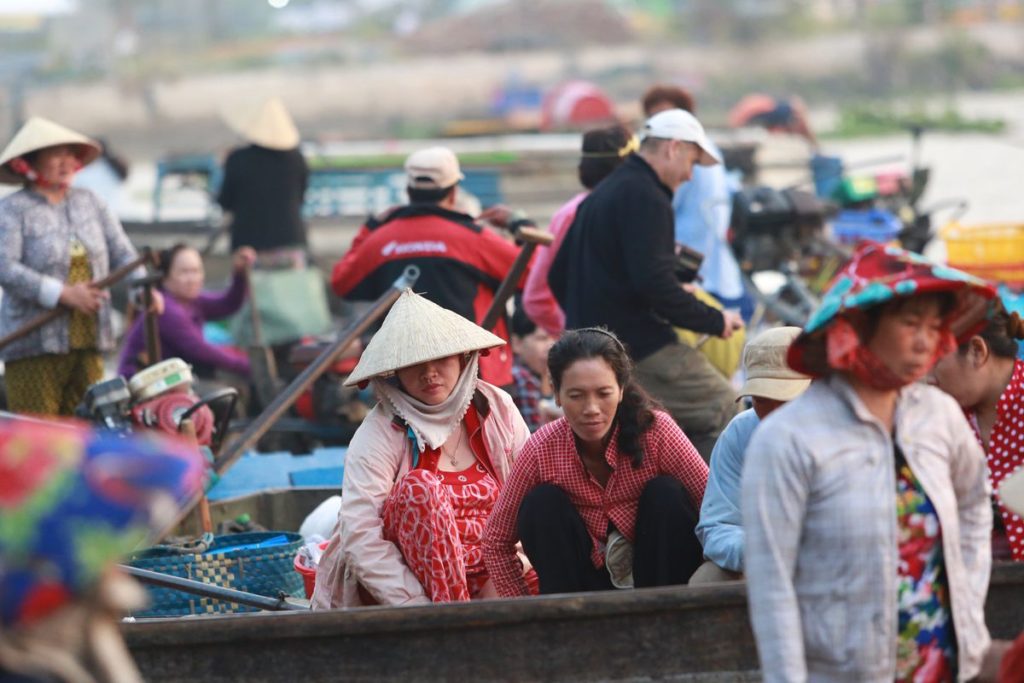
These days only a few boats still show up, often selling produce, coffee, or noodle soup in the early morning. While it’s far quieter than it once was, the market gives a brief glimpse of the Mekong’s river trade traditions, especially if you visit at sunrise when the atmosphere is at its best.
History of Phong Dien Floating Market
Phong Dien Floating Market was born in the early days of the Mekong Delta’s development, when rivers and canals were the main transport routes. Before modern bridges and highways, the waterways connected villages and towns, and trading by boat was the most efficient way to move goods.
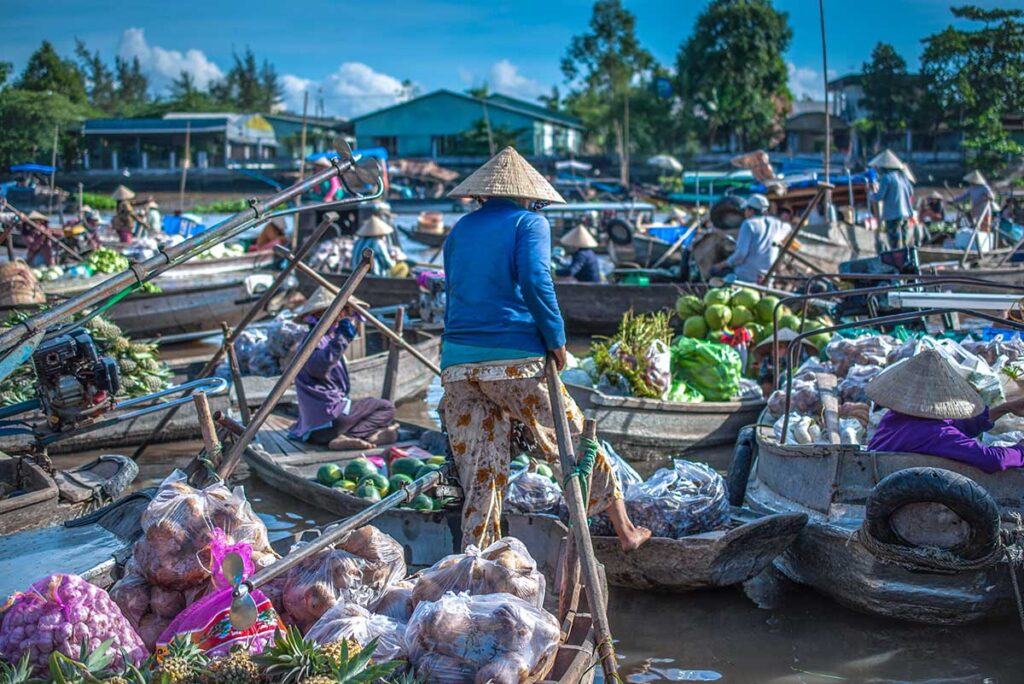
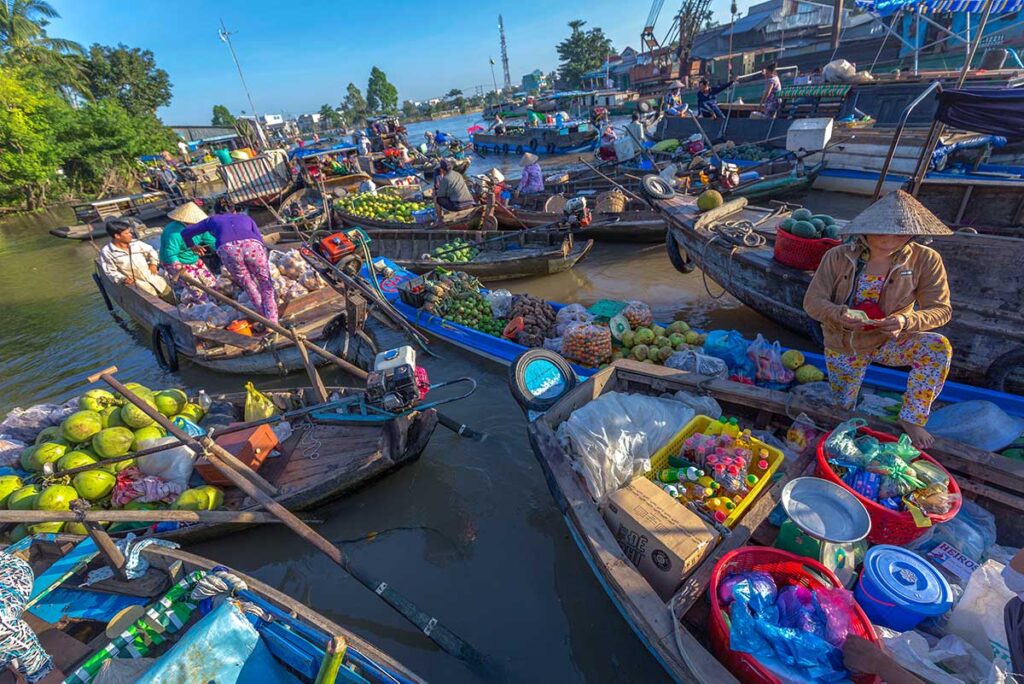
Unlike Cai Rang, which grew into a wholesale hub with large cargo boats, Phong Dien was a smaller community market. Local farmers and traders brought their produce on sampans, selling in smaller quantities directly to households or to other vendors heading deeper into the canals.
For many years, the river doubled as both a commercial space and a social meeting point. Families would rise before dawn, load up their boats, and spend the morning selling fruit, vegetables, or household goods while catching up with neighbors. The floating market wasn’t just about trade—it was also a cornerstone of everyday life in the district.
The reality today
Phong Dien is no longer the lively community market it once was. These days, only a small number of boats gather at dawn, often fewer than ten. Some still trade fruit and vegetables, while others mainly serve drinks or simple breakfasts from tiny cooking pots balanced on their sampans.
The decline accelerated during the COVID-19 pandemic, when long closures pushed many vendors to abandon the river trade for good. With better roads and local land markets now in place, few returned once restrictions ended.
Activity peaks briefly between 5:00 and 6:30 a.m., but by around 7:00 most boats have already dispersed into the canals. On some mornings, there may be almost no signs of a market at all, making visits unpredictable.
What can you see at Phong Dien Floating Market?
Much of what made Phong Dien Floating Market special has faded, but if you arrive early and get lucky, you can still catch glimpses of how it once looked. A few boats continue the traditions of selling food, produce, and drinks on the river, creating a short-lived but atmospheric scene at dawn. Here’s what you may find:
1. Early morning trade
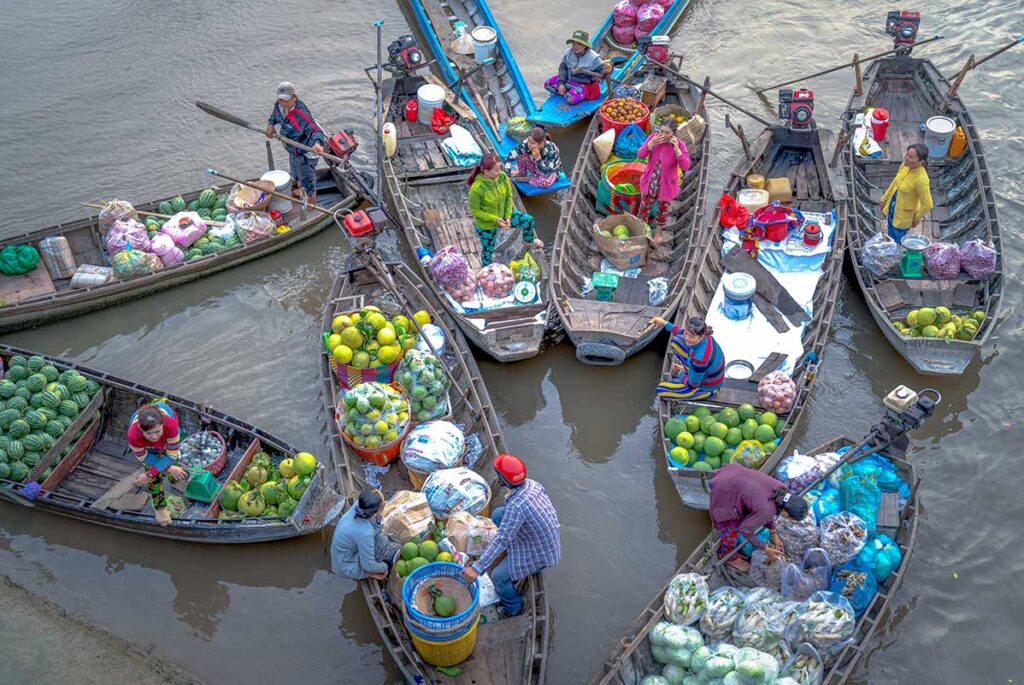
The river is at its liveliest between 5:00 and 6:30 a.m. Boats cluster together, vendors call out, and produce changes hands quickly. By 7:00, the market winds down, with traders dispersing into the smaller canals or heading home.
2. Floating breakfast boats

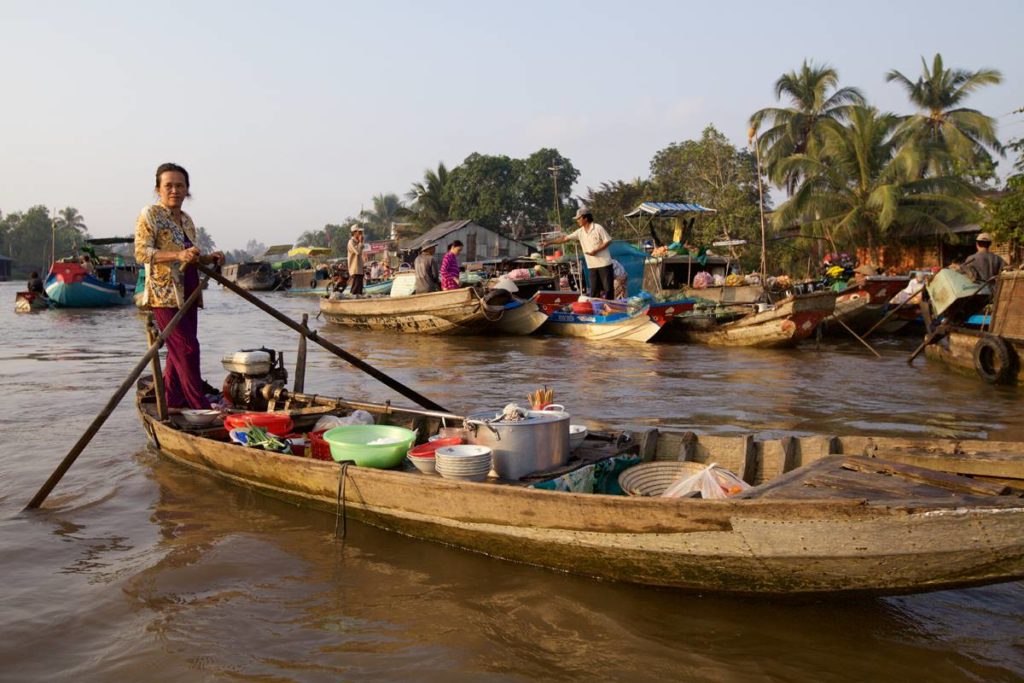
A highlight for many travelers is grabbing breakfast right on the water. Small sampans double as mobile kitchens, serving steaming bowls of noodle soup, fresh coffee, or even homemade banana chips. Prices are low, but the experience of eating on the river at sunrise is what makes it memorable.
3. Fruit & Vegetable boats
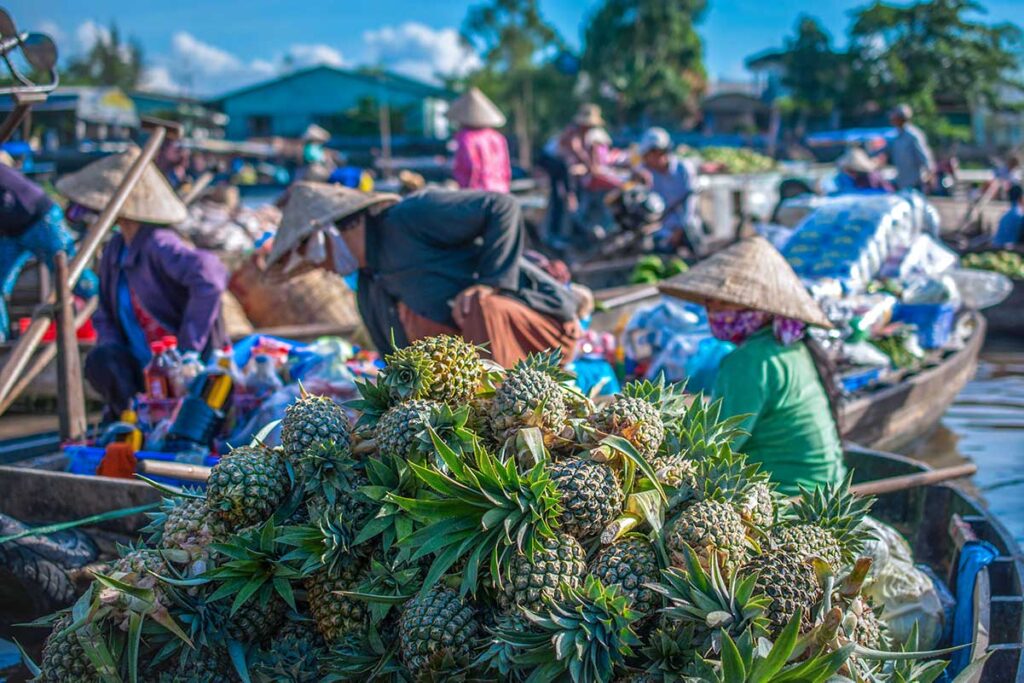
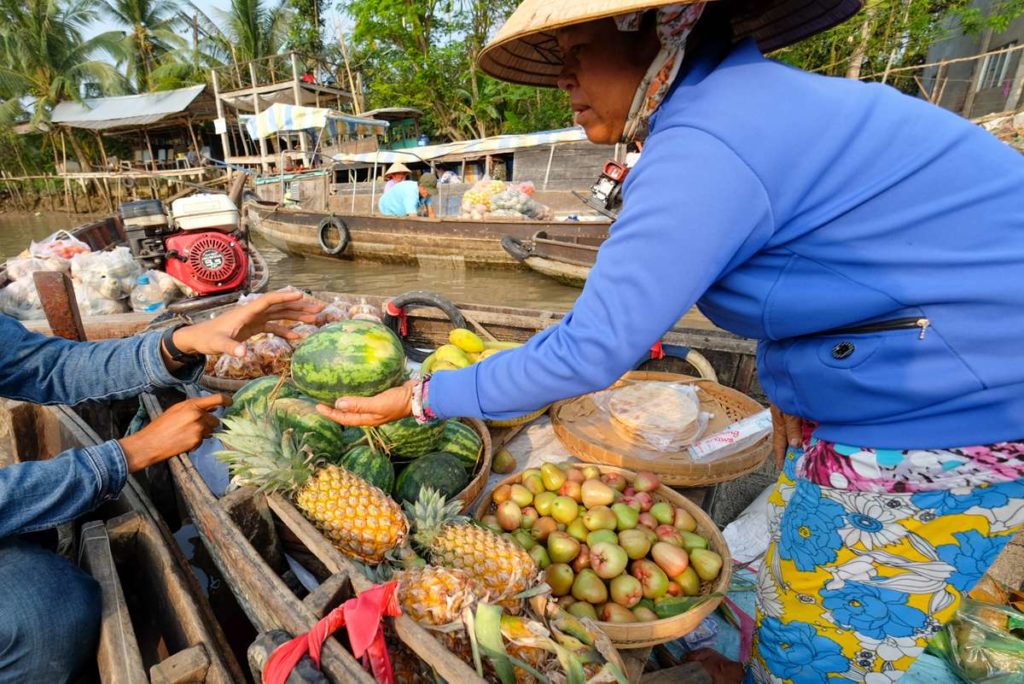
Some boats still bring seasonal produce—mangoes, pineapples, papayas, or whatever is in season. Larger boats often hang their goods from tall poles at the bow, a traditional way to advertise what they are selling without shouting across the water.
4. Local river life
Beyond the market itself, life on the river is part of the experience. You may see women vendors paddling small sampans, families cooking breakfast on their boats, or ferries shuttling locals across the canal. These everyday scenes often feel as authentic as the market trade itself.
5. From the bridge
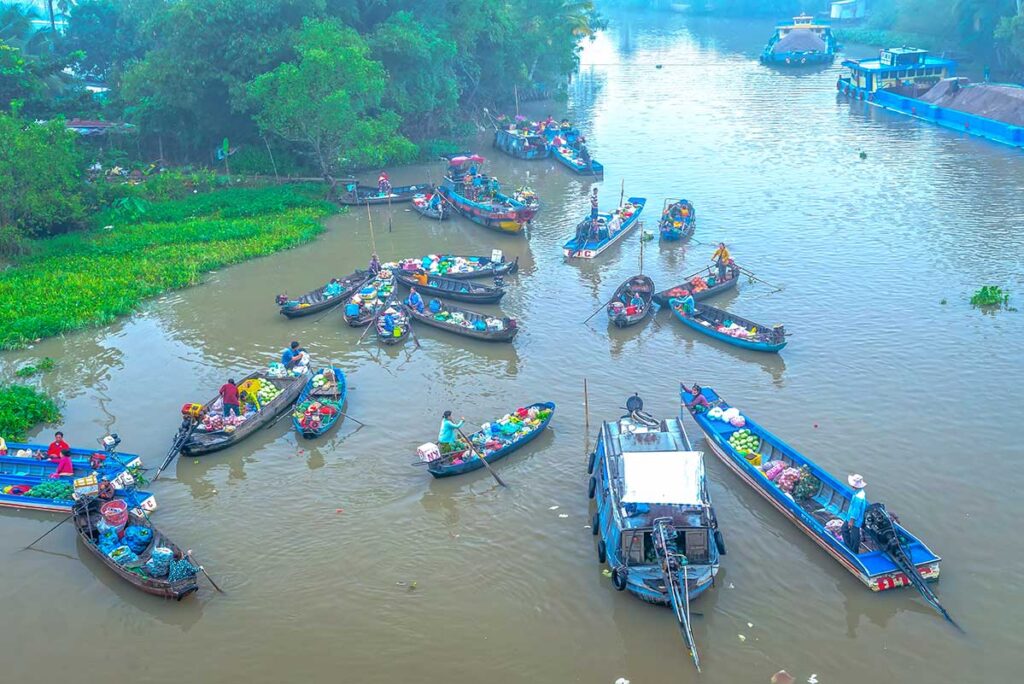
If you don’t manage to get on a boat, there’s still a good vantage point from the nearby bridge. It’s not the same immersive experience, but it does give you a clear view of the boats clustered below, especially at first light when the colors of the river are at their best for photography.
Location and Getting there
Where is Phong Dien Floating Market?
Phong Dien Floating Market is located near Nhon Ai in Phong Dien District, about 17 kilometers southwest of Can Tho city center. The market used to sit at the three-way junction where the Can Tho River split from the Hau River, but it later shifted about 800 meters downstream, close to the main bridge in town. This newer location is easier to reach by road and gives visitors a clear vantage point from above.
Can Tho as a base
Can Tho is the largest city in the Mekong Delta and the main base for reaching Phong Dien. Most visitors overnight in Can Tho before taking a morning tour to the floating markets. However, starting from the city center makes it difficult to reach Phong Dien at its early peak, as the boat trip from Ninh Kieu Wharf takes well over an hour. A more practical option is to stay in a homestay or lodge in the rural outskirts of Can Tho, closer to Phong Dien itself. This allows you to get on the river earlier and see whatever activity remains at dawn without such a long journey.
Getting there by boat
Best option: local pickup near Phong Dien. If you stay in the rural outskirts (e.g., Nhon Ai / Phong Dien area or between the two markets), your host or operator can arrange a small boat to collect you before dawn. It’s typically a short ride (often 10–30 minutes) to reach Phong Dien right in the 5:00–6:30 a.m. window, then continue across the river to Cai Rang and through small canals. This timing is far easier than starting from downtown.
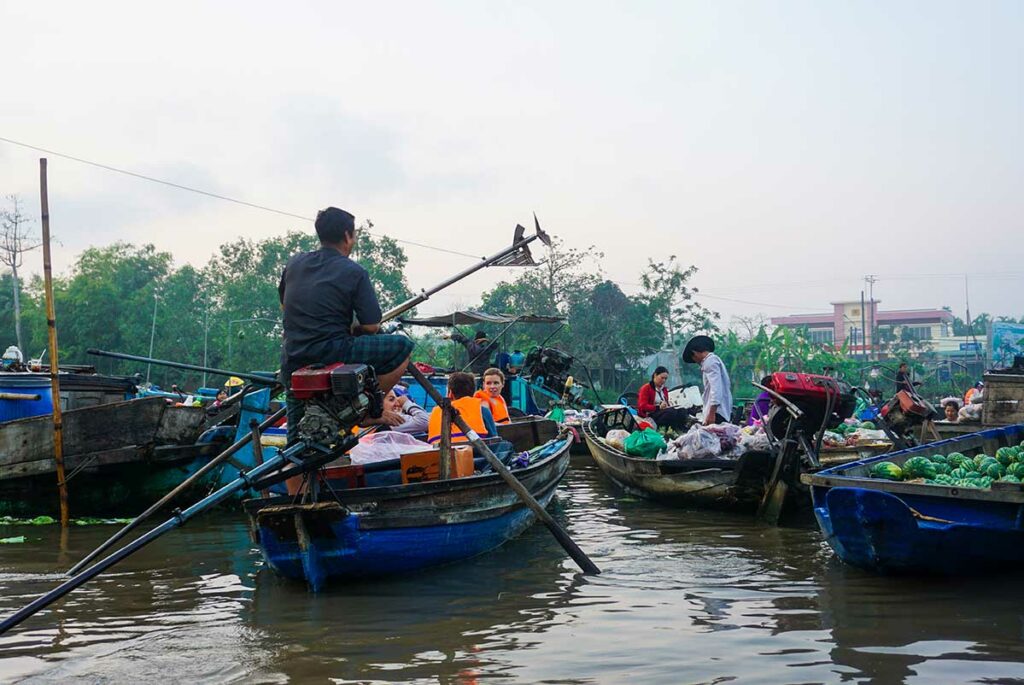
Alternative: from Ninh Kieu Wharf (Can Tho city). Boats from the city take roughly 1.5–2 hours to reach Phong Dien and usually combine Cai Rang and small canals on the same outing. To catch Phong Dien’s brief peak, you’ll need a pre-dawn departure (often before 4:30 a.m.). It’s atmospheric but less practical than staying closer to the market.
Getting there by road
By road, the market is around 40–45 minutes from central Can Tho. Travelers who drive or ride out can watch from the bridge or try to arrange a small local boat on site, though this is less reliable than booking in advance. Road access is straightforward, but the experience is limited compared to arriving by boat, as you mainly observe from above rather than being part of the river scene.
Practical visiting information & Tips
Combining Phong Dien with Cai Rang
Seeing both markets in one trip is possible, but how you plan it makes a big difference. If you start from central Can Tho, it’s hard to reach Phong Dien during its short-lived peak and still have enough time for Cai Rang. Staying in a homestay closer to Phong Dien solves this problem: you can visit Phong Dien first at dawn, then cross the river to Cai Rang as it gets busier. Many boat tours in the area are designed around this sequence.
Best time to visit
The market is at its busiest between 5:00 and 6:30 a.m. After 7:00 a.m., most boats have already dispersed, and by 8:00 there is usually nothing left to see. If you want any chance of catching activity, you need to be on the water before sunrise. Also note that the market does not operate during Tet (Lunar New Year), though it usually runs during the Western New Year period.
Where to Stay
If Phong Dien is your main goal, choose a homestay in the Phong Dien area or on the outskirts of Can Tho. This makes it easier to arrange a local boat and reach the market on time. For those primarily interested in Cai Rang or general Can Tho sightseeing, a hotel in the city center is more convenient, with plenty of options across different budgets.
What to bring
- Cash in small bills – to pay for coffee, snacks, or breakfast on the river.
- Hat and sunscreen – the sun rises quickly and gets hot even in the early morning.
- Mosquito repellent – useful if you’re starting before dawn or staying in a rural homestay.
- Camera or phone – for capturing the early morning light and colorful boats.
- Raincoat or poncho – if you’re traveling in the wet season, as showers are common.
Is Phong Dien Floating Market worth visiting?
Whether Phong Dien is worth the trip depends on what you’re looking for. The market has shrunk to just a handful of boats, so if you expect a bustling scene you’ll likely be underwhelmed. Cai Rang, the bigger and better-known floating market, still runs daily and usually has more activity, but even there the trade is far smaller than it was in the past.
Where Phong Dien fits best is not as a destination on its own, but as a stop within a broader boat trip. Coming here just for the market will likely feel underwhelming, but pausing for breakfast on a sampan and watching the handful of traders at sunrise can still be enjoyable. When combined with drifting through the smaller canals, visiting orchards, or stopping at local workshops, Phong Dien adds a small but authentic moment of river life to the journey.
For most travelers, Phong Dien works best when combined with other experiences: visiting Cai Rang to see the scale that remains, and then drifting through the smaller canals to get a taste of everyday river life. Taken together, this gives you the clearest picture of how floating markets once shaped the Mekong Delta.
